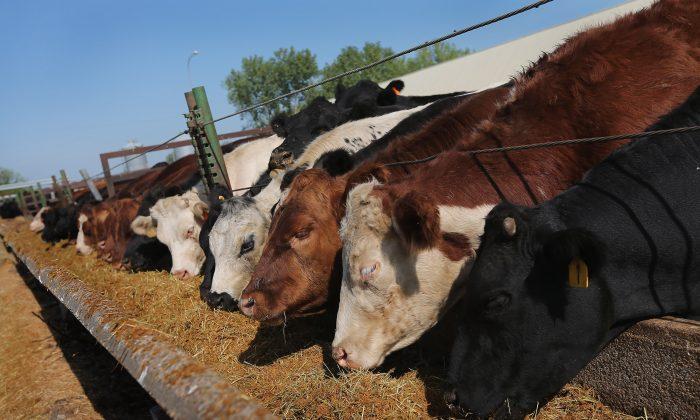The U.S. Food and Drug Administration (FDA) has vowed to cut antibiotics use for livestock, but a new report finds that regulators aren’t taking the problem as seriously as its own research would suggest.
“Playing Chicken with Antibiotics” is a report by the Natural Resources Defense Council (NRDC) that looks at FDA documents obtained by a Freedom of Information Act request. Documents show that between 2001 and 2010, the FDA reviewed the safety of 30 penicillin and tetracycline feed additives approved for “nontherapeutic use” in livestock and poultry.
The documents show that the FDA rated 18 of the drugs as high risk of exposing humans to antibiotic resistant bacteria through the food supply and of adversely affecting human health.
For the 12 remaining drugs in the FDA review, drug manufacturers did not provide proof of safety for humans.
According Carmen Cordova, NRDC microbiologist and lead author of the NRDC analysis, the FDA knowingly allowed the use of drugs in animal feed even though they failed to meet approval standards the agency set in 1973.
“That’s a breach of their responsibility and the public trust,” Cordova said in a statement.
According to the NRDC report, the significance of these previously unreleased documents extends far beyond the 30 drugs reviewed. The tetracycline and penicillin FDA examined only make up about half of all the antibiotics used in animal agriculture. The NRDC said generics and other feed additives approved for similar uses may also contribute to antibiotic resistance risks.
“This discovery is disturbing but not surprising given FDA’s poor track record on dealing with this issue. It’s just more overwhelming evidence that FDA–in the face of a mounting antibiotic resistance health crisis—is turning a blind eye to industry’s misuse of these miracle drugs,” Cordova added.
Resistant to Change
In the 1950s, mixing low doses of antibiotics into animal feed was hailed as a miracle of modern science. The practice promoted faster growth and prevented the infections that often plague animals in the crowded, unsanitary conditions of factory farms.
Regulators first detected problems in antibiotic resistance linked to livestock feed additives in the 1970s. Yet despite FDA’s own research and warnings from the public health community about drug resistant superbugs, efforts to curb antibiotic use on the farm have been slow.
In December 2013, the FDA gave final guidance on a policy to address the issue. However, instead of strict regulations, the agency called for the industry to voluntarily withdraw from antibiotic use, “because it is the fastest, most efficient way to make these changes.”
“Based on our outreach, we have every reason to believe that animal pharmaceutical companies will support us in this effort,” said Michael Taylor, FDA’s deputy commissioner for foods and veterinary medicine, in a statement.
Representatives from the drug and livestock industries assert that most antibiotics found in factory farming are used responsibly—for the treatment of diseased animals. But the claim is hard to verify because regulators insist that details of livestock antibiotics use remains a trade secret. According to NRDC, 70 percent of all medically important antibiotics sold in the United States go to livestock production.
The NRDC won a lawsuit against the FDA for failing to address the threat posed by the misuse of antibiotics in the livestock industry. However, the FDA has appealed the ruling, and a decision is now pending in the U.S. Court of Appeals for the Second Circuit, in New York.






Friends Read Free